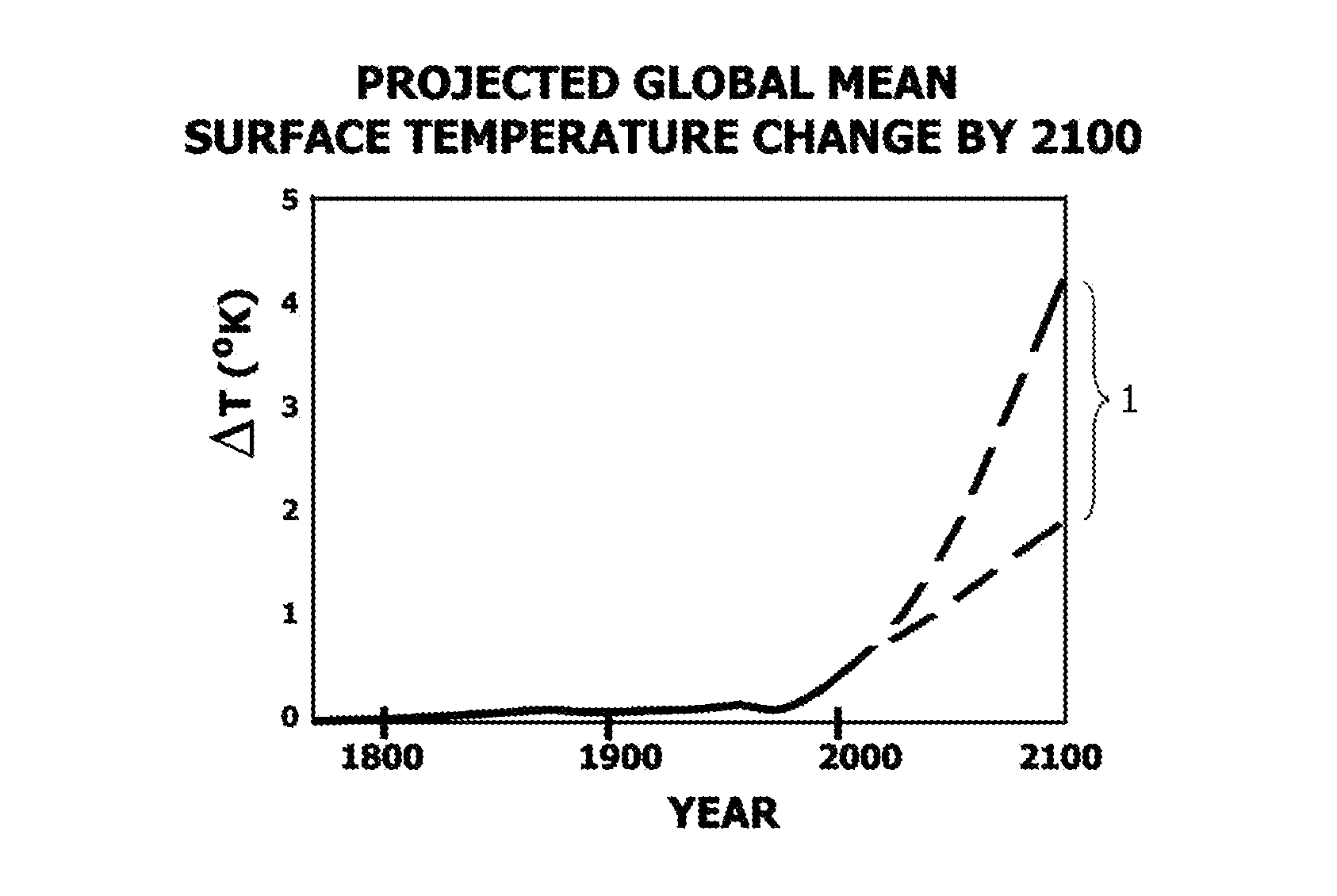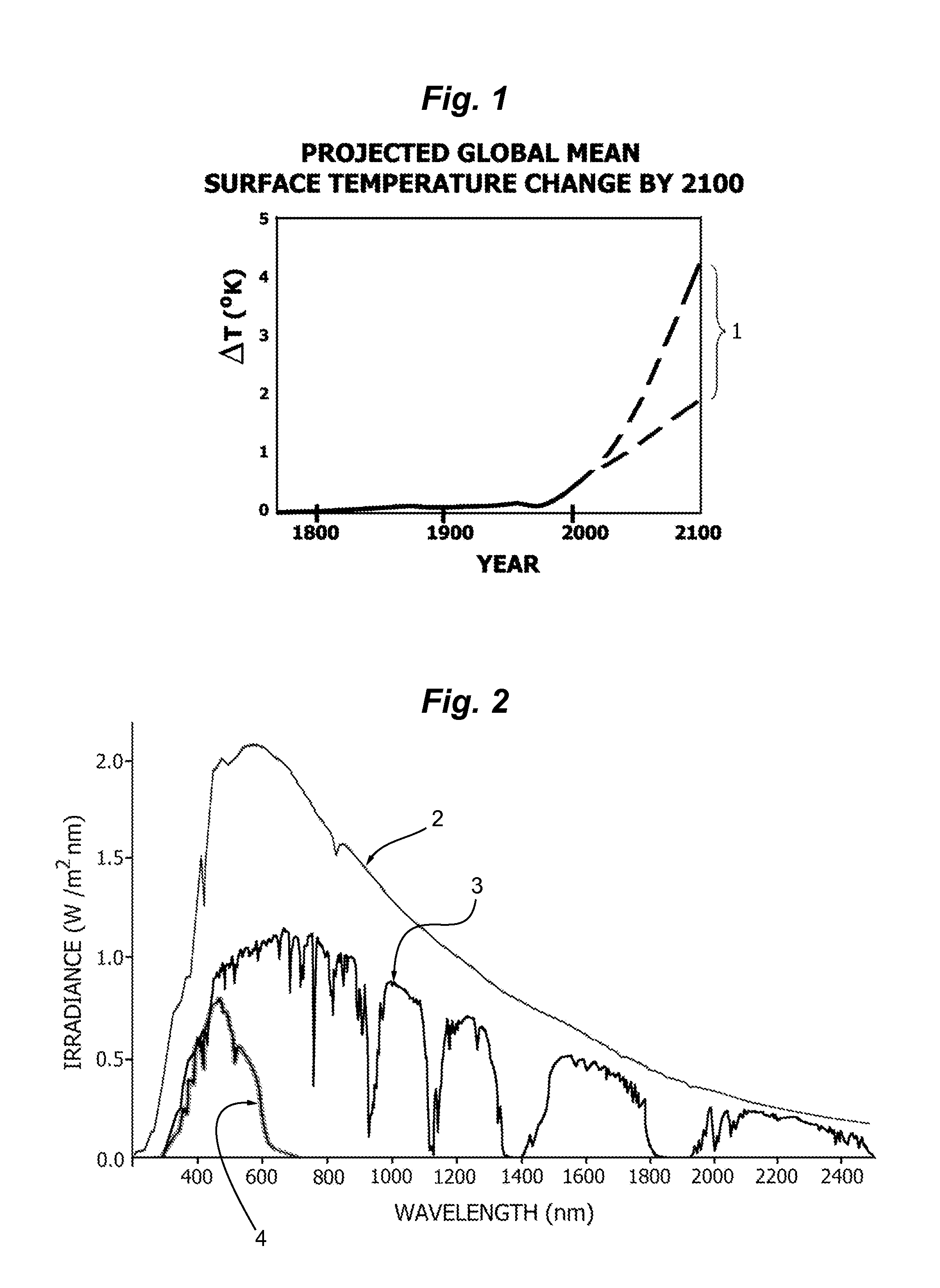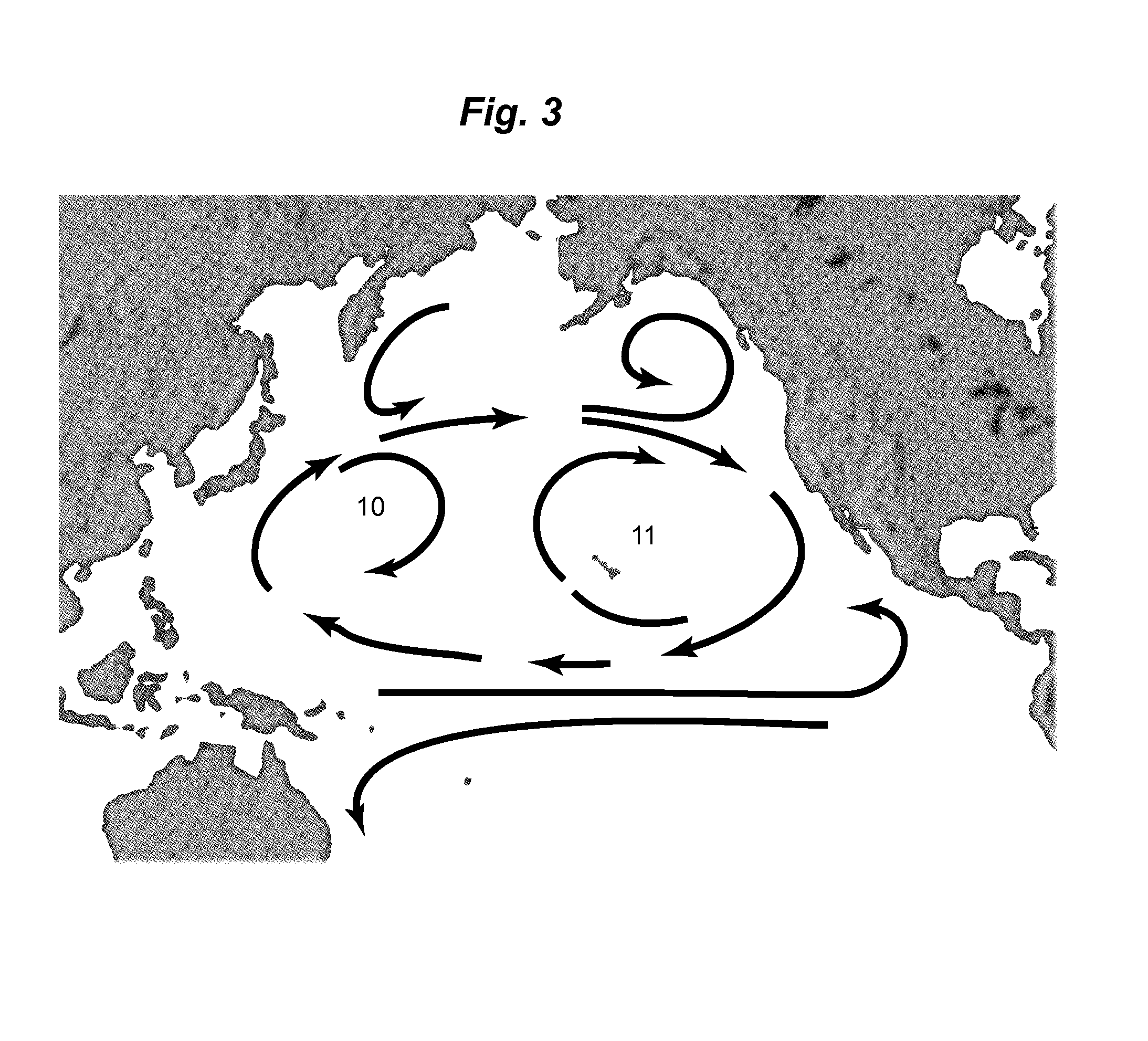Biophysical Geoengineering Compositions and Methods
- Summary
- Abstract
- Description
- Claims
- Application Information
AI Technical Summary
Benefits of technology
Problems solved by technology
Method used
Image
Examples
example 1
[0158]A 30 mL aliquot of a 10% (w / v) stock of Miracle-Gro (Scott's Miracle-Gro Products, Marysville Ohio) was added to 50 mL of colloidal silica in methanol (Nissan Chemical America, Tarrytown N.J., CAS 112926-00-8) and the mixture was heated in an open vessel to reduce the volume to about 40 mL. A clear solution resulted. The solution was then allowed to cool and a clear hard gel matrix resulted. Over time in an open container, a somewhat brittle solid formed.
[0159]A binder such as a sol-gel precursor is optionally used to semi-permanently fuse the colloidal silica, as is done in silica “hardcoat”, a commercial process (see for example U.S. Pat. No. 6,587,263). Entrained air or CO2 is also incorporated in the matrix.
example 2
[0160]The following mineral components were crushed and mixed with a mortar and pestle.
Major Inorganic SpeciesgmsIron Oxide50Iron Nitrate10Calcium Oxide20Calcium Phosphate10Zinc Carbonate5Magnesium Oxide4
[0161]To 10 gm of the above mixture, the following trace mineral components were added with further grinding.
Trace Inorganic speciesgmsCopper Nitrate hemipentahydrate0.70Phosphomolybdic Acid0.20Manganese Chloride0.08Phosphomolybdic Acid0.01Cobalt Nitrate hexahydrate0.01Boric Acid0.005Selenium Chloride0.001Sodium Vanadate0.001
[0162]To this mixture of solids, 200 mL of colloidal silica in methanol was added. After heating with stirring to reduced volume and cooling, a hard gel formed. This gel when baked produces a rock-like composition without the decomposition indicative of organic charring.
example 3
[0163]As a first approximation, mix the aqueous suspension of Example 2 with 200 mL of colloidal silica in methanol as described above. After heating with stirring to reduced volume, add 300 gm of glass hollow microspheres and continue stirring until fully mixed. Charge 50 mL iron molds with the mixture, the molds having a selected shape and depth, with a shallow conical bottom profile. Bake to lithification.
[0164]During the early stages of baking, it is anticipated that the iron filings will sediment to the tip of the base of the mold and the glass hollow microspheres will rise to the surface of the liquid. This results in a “puck” shaped siliceous ingot on ejection from the mold. The ingot is comprised of highly dispersed inorganic minerals, sedimented iron filings, and a froth of microbubbles in a silicate matrix. In other words, puck density is here preferably non-uniform but is cumulatively less than that of water, that is to say the aggregate density is less than 1 gm / cm3. By ...
PUM
 Login to View More
Login to View More Abstract
Description
Claims
Application Information
 Login to View More
Login to View More - R&D
- Intellectual Property
- Life Sciences
- Materials
- Tech Scout
- Unparalleled Data Quality
- Higher Quality Content
- 60% Fewer Hallucinations
Browse by: Latest US Patents, China's latest patents, Technical Efficacy Thesaurus, Application Domain, Technology Topic, Popular Technical Reports.
© 2025 PatSnap. All rights reserved.Legal|Privacy policy|Modern Slavery Act Transparency Statement|Sitemap|About US| Contact US: help@patsnap.com



